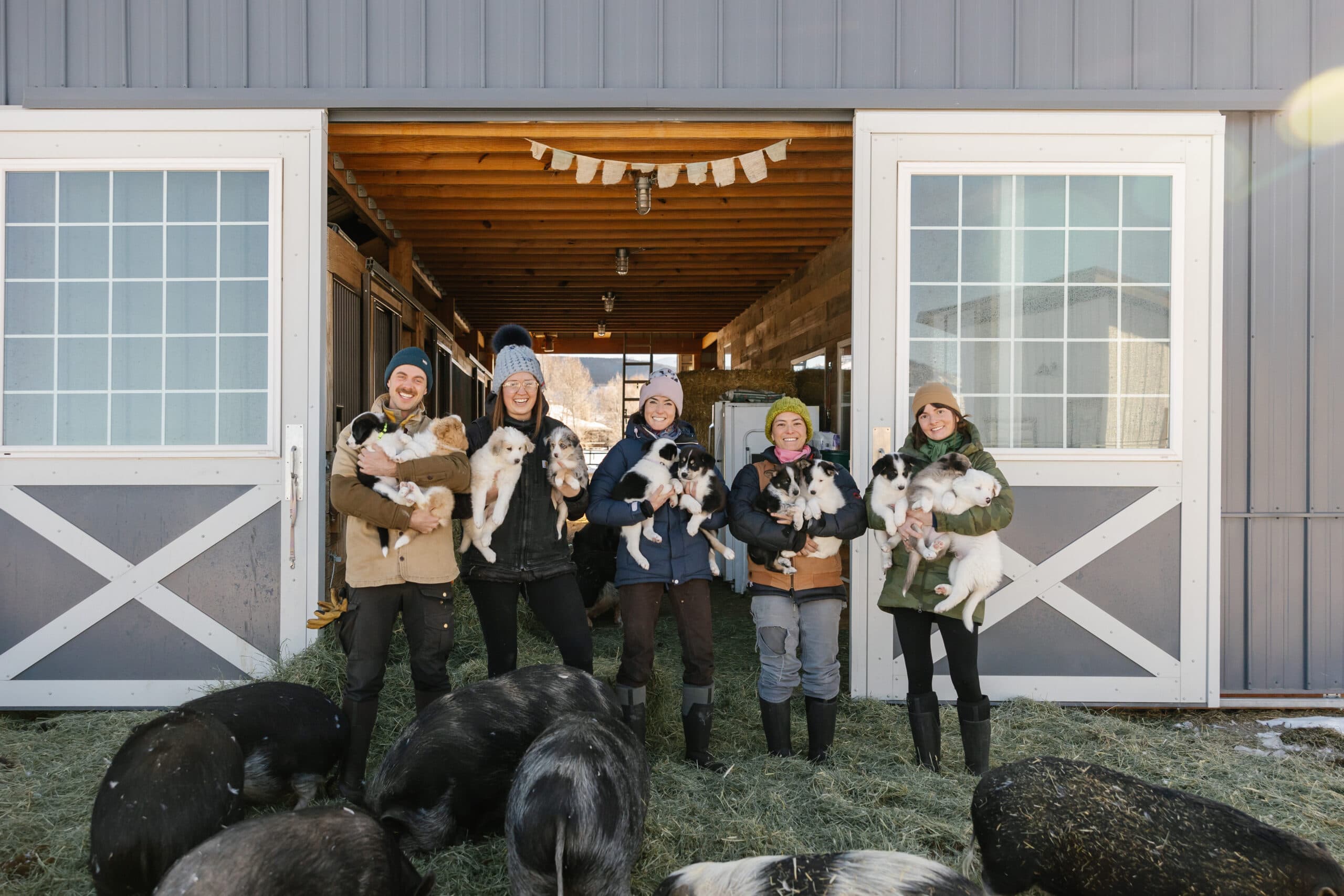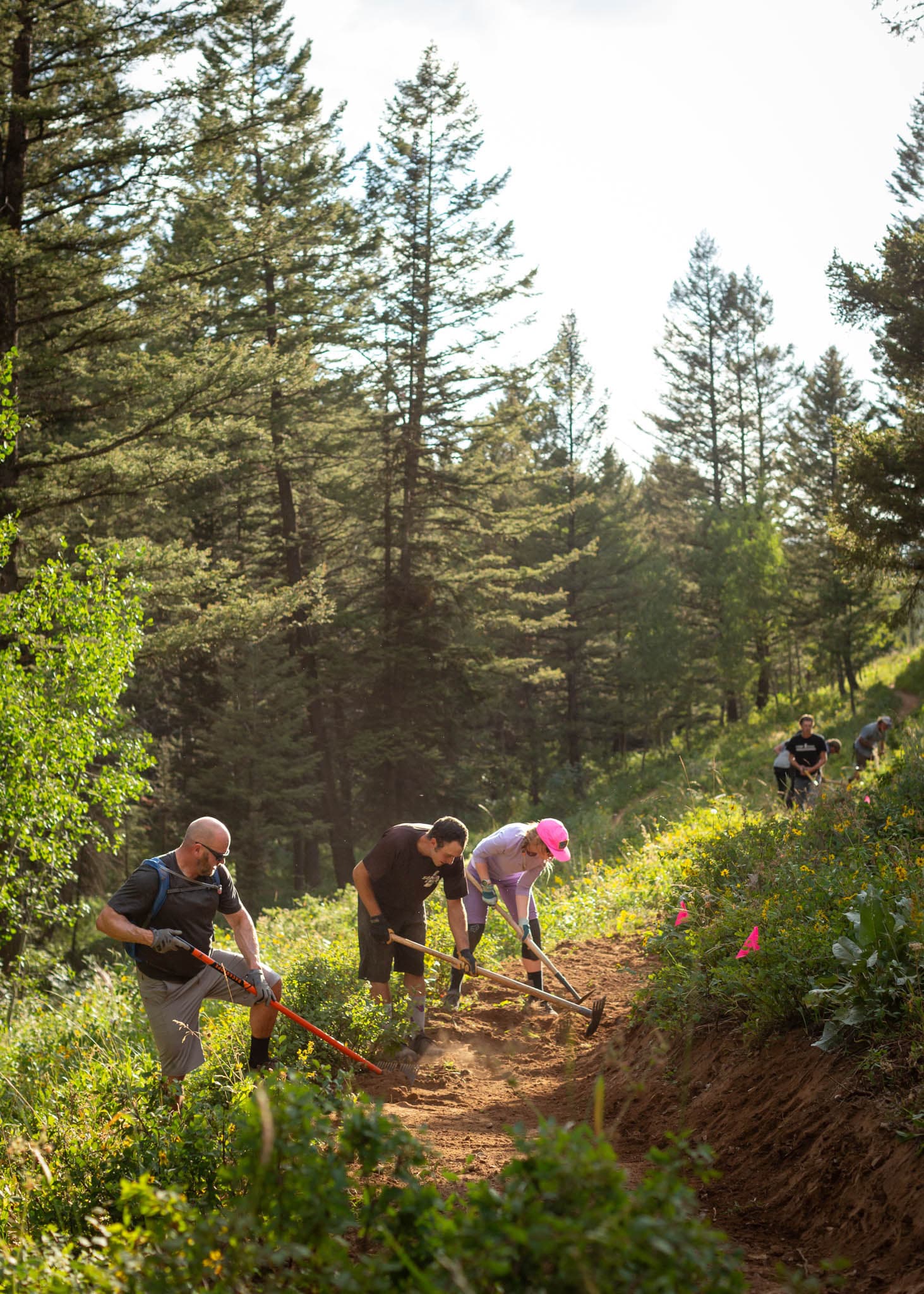A Fork in the River
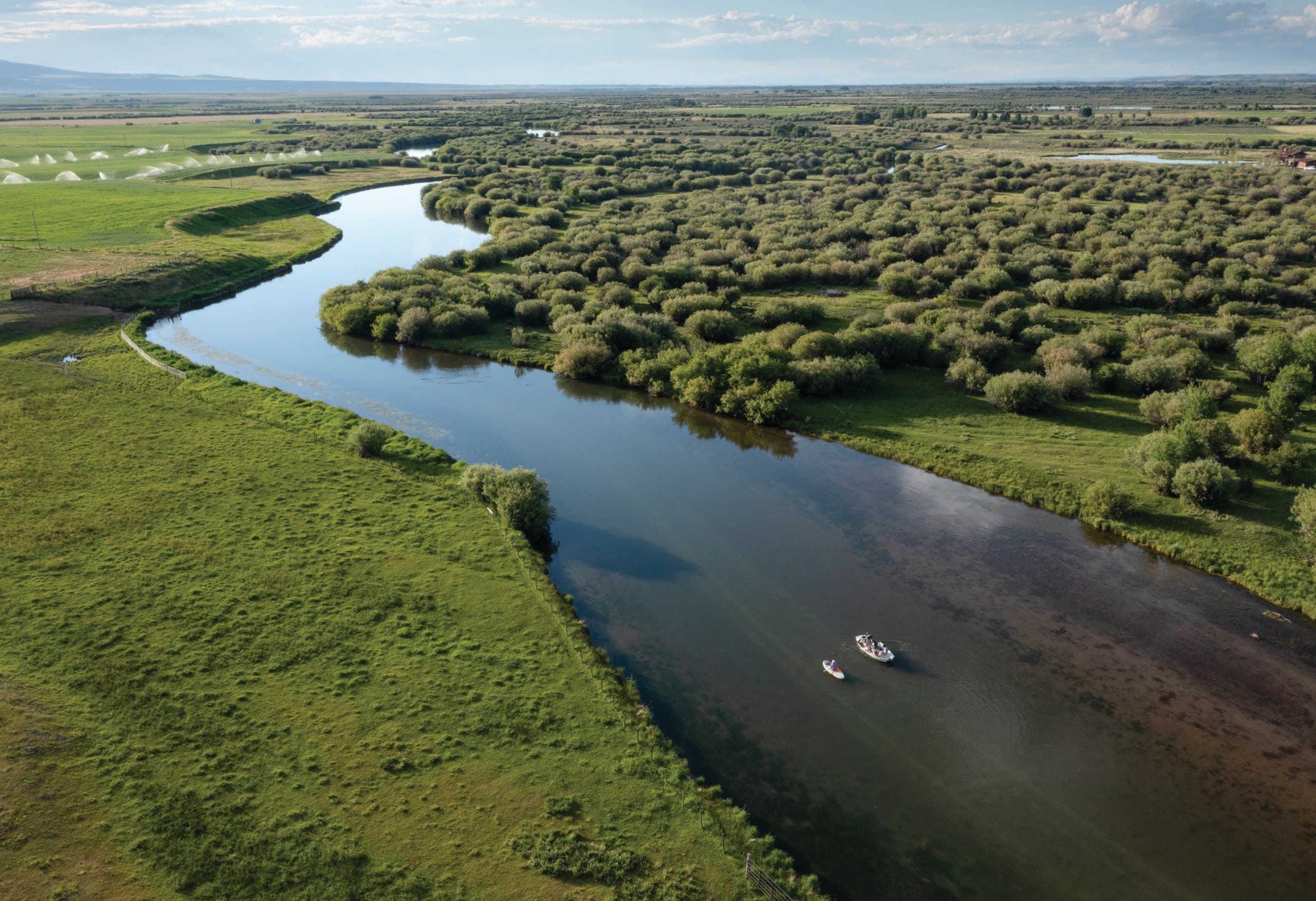
An evening float down the Teton River is a classic Teton Valley experience. By mid-summer, the river is slow and lazy. Boaters can sit back and watch the world drift by as the river twists its way through thickets of willow and past open farmland. Often, if you’re lucky, you’ll spot wildlife—moose, eagles, sandhill cranes, warblers, or maybe a beaver or swan—as you meander downstream.
The Big Hole Mountains and the Teton Range, washed pink and gold with late afternoon alpenglow, frame the view as you move along with the current. The only sounds are the birds, the gurgle of the river, and the splash of your paddle dipping into the water.
Except lately. Lately another sound has begun to encroach upon this tranquil scene: the sound of people.
In 2021, between Memorial Day and Labor Day, the upper Teton River had 66,000 user visits, or the estimated number of different people visiting the river each year, a 28 percent increase from 2018 numbers. That’s a lot of people on a river that is not very wide and only a foot or so deep in most places. These users created parking problems, caused overcrowding at boat ramps, and resulted in an increase in litter, noise, and congestion on the river. A ripple effect of the current growth, the need for a conversation about river usage and capacity, has come to the surface: How much is too much? And who gets to say? On May 9, to help answer these looming questions, the county passed a Waterways Recreation Ordinance to help decrease river overuse and protect its resources, thanks to public input and participation.
“The Teton is very easy,” says Rob Marin, Teton County, Idaho’s GIS manager and community projects coordinator. “So, a lot of people can enjoy it safely. The problem is that overcrowding on the upper Teton River poses impacts to wildlife, to the environment, and to users’ recreational experience.”
Overcrowding on waterways is not unique to Teton Valley, nor is it a new problem. In 2019, pre-pandemic, more than 87 million adults partook in recreational boating, according to Statista, a German company specializing in marketing and consumer data. Lotteries for permits on popular rivers across the United States have been in place for decades to manage access and ensure equitable participation. Anecdotal evidence indicates this popularity has grown during the COVID-19 pandemic, with outfitters and manufacturers reporting they’ve struggled to meet demand for boating equipment and recreational opportunities.
We’ve seen those effects in Teton County, Idaho, as well. The valley’s population has doubled since 2010, and lodging sales went from just under $23 million in 2020 to over $41 million in 2021. That means more people, more money, more cars, more demand. It’s a double-edged sword. Increased sales tax revenue and more spending stimulate the economy. But they also strain the resources that draw people to the valley in the first place. Resources like the Teton River.
Rivers facing similar pressures can be found all over the country; however, the upper Teton is somewhat unusual because most of the property along its banks is private. There’s no land management agency like the U.S. Forest Service or the National Park Service tasked with devising a management plan for the Teton. Idaho Fish and Game owns some of the access points along the river, and the Idaho Outfitters and Guides Licensing Board oversees the fishing outfitters operating on it, but there is no single agency with oversight, which leaves the county—almost by default—in charge.
“The only things Fish and Game can affect are the behaviors associated with fishing, hunting, and trapping,” says Brett High, the regional fisheries manager for Idaho Fish and Game. “Everything else is outside our scope and falls to the county.”
Unfortunately, there aren’t many other counties with river management plans in place to serve as role models, so Teton County is wading in unknown waters. The mandate, however, is clear: People want to preserve and protect the Teton River and its values of solitude, nature, peace, and serenity.
“Our effort is driven by public demand,” Marin says. “This isn’t necessarily a task the county was dying to take on. We have a full plate. But we are hearing from the public, so we felt we had to take some kind of action to get [this conversation] going. Otherwise, nothing is going to happen. But it’s tough because we don’t have any resources—no recreation program, no staff, no funding.”
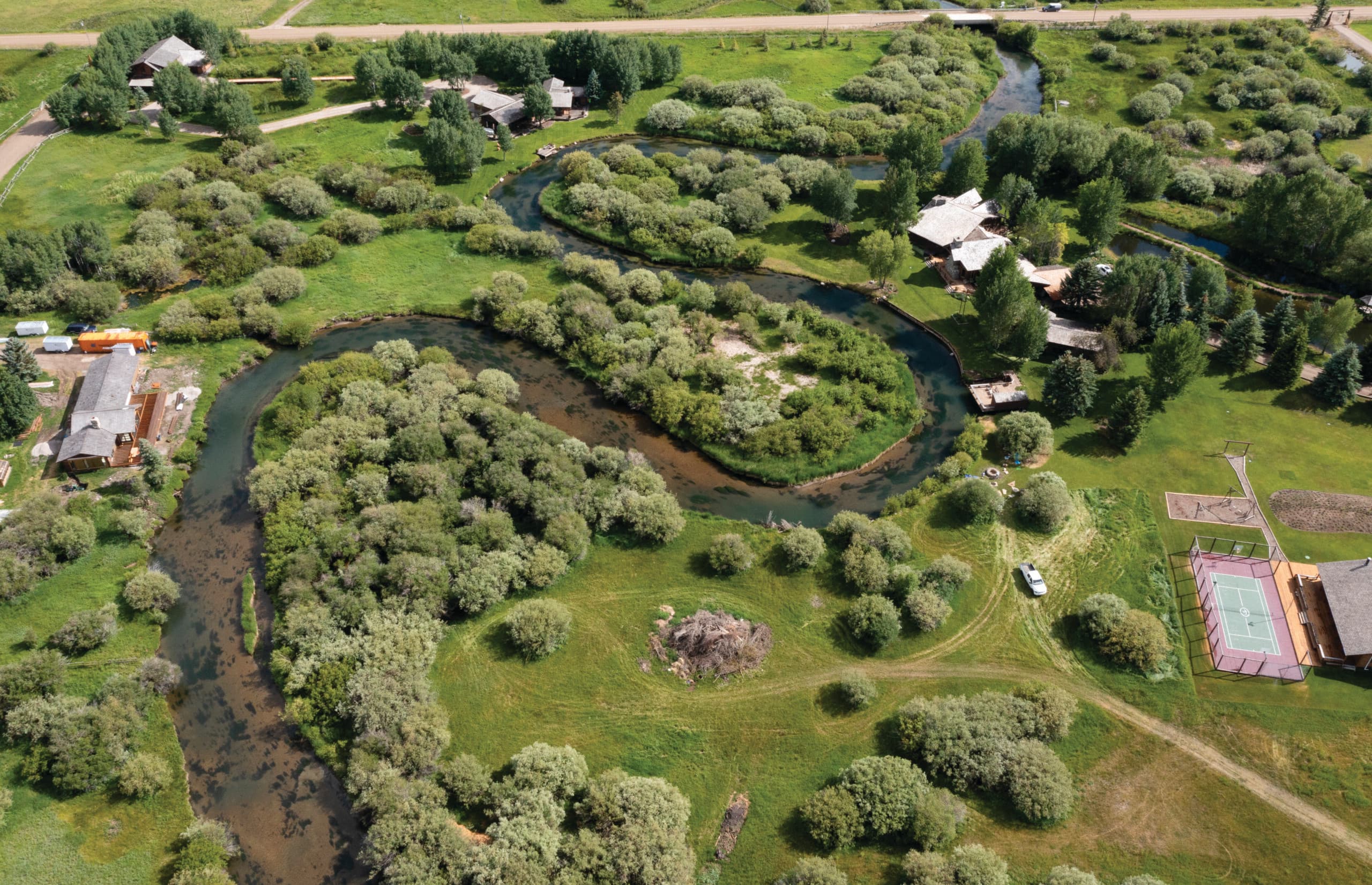
Early summer flow water meanders by the confluence of Teton Creek and the Teton River, just southwest of the city of Driggs, Idaho. Photo by David Stubbs
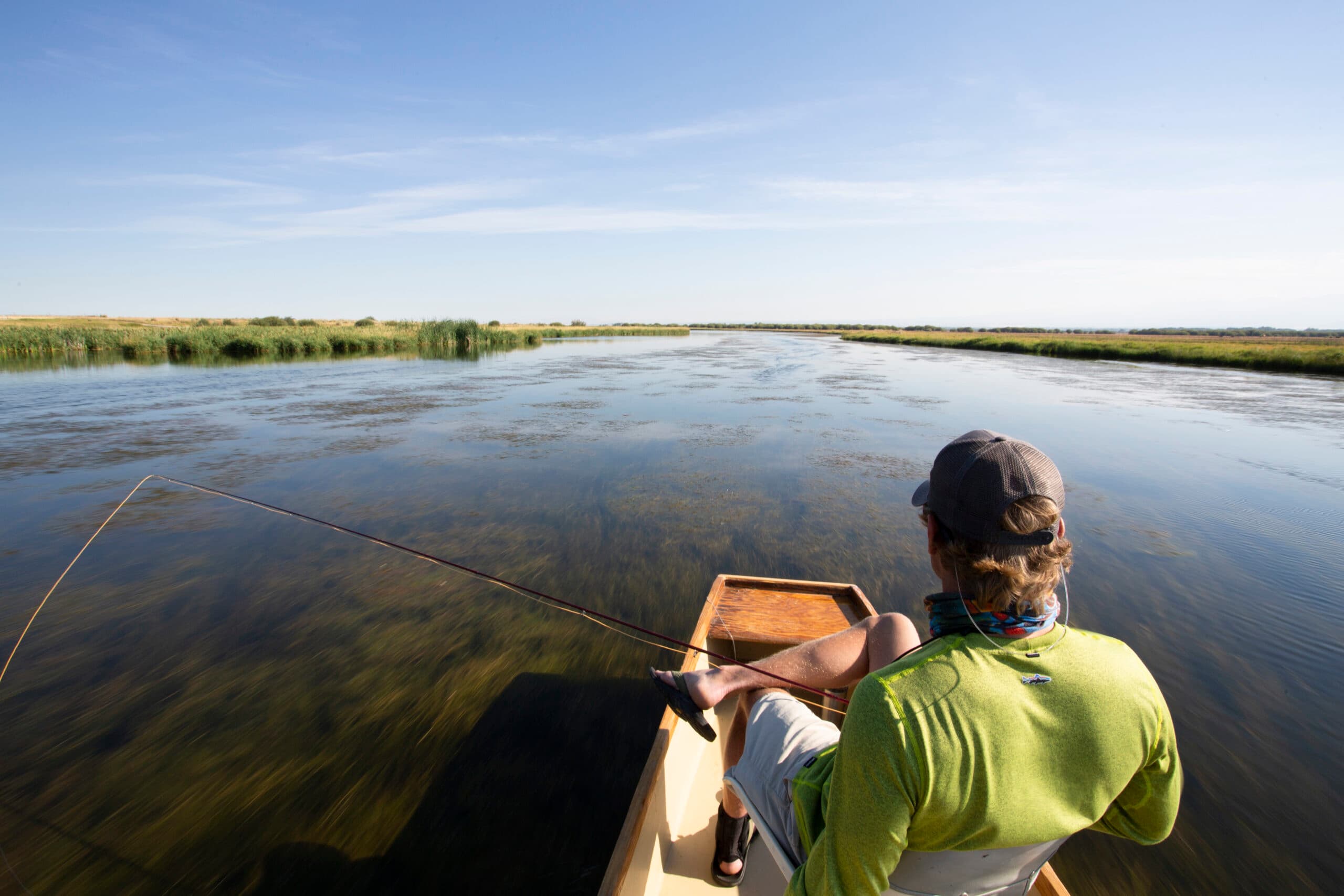
Teton Valley Lodge for InfusionSoft
Photo by David Stubbs
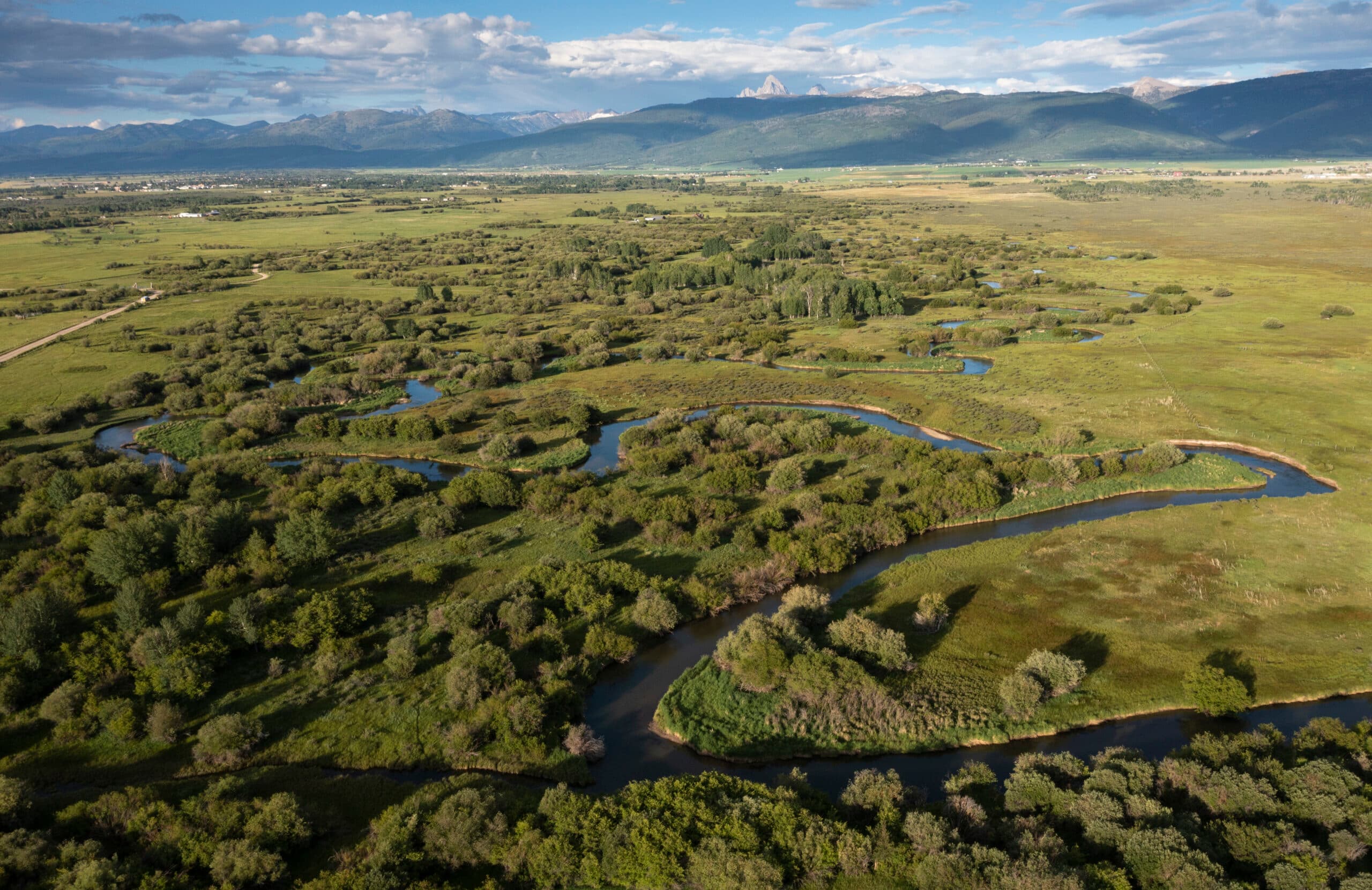
Photo Credit
Teton Creek meanders west toward the confluence with the Teton River southwest of Driggs, Idaho. Photo by David Stubbs
How we got here
Mike Dawkins, president of WorldCast Anglers in Victor, has been floating the Teton since he moved to the region in 2004. He says the river used to be off most visitors’ radar.
“The Teton never received any attention from anglers or general recreationists,” Dawkins says. “We [seemed to] always have the place to ourselves.
“No doubt the word is out now that the place I call home is an awesome place to live,” he adds. “I can’t blame anybody for wanting to go out on the river and enjoy it. I try to keep that perspective.”
Part of the reason the Teton was quiet in the early 2000s can be traced to the condition of the river at that time. Friends of the Teton River was founded in 2001 because of community concern about its health.
“The Teton was listed as an impaired river in the late 1990s,” says Amy Verbeten, Friends of the Teton River’s executive director. “The Yellowstone cutthroat trout population crashed about that time, and the entire fishery was in decline. … There was a lot of concern among farmers and ranchers who were noticing a change in hydrology. Springs were drying up. Farmland was being replaced by developed land, and there had been a shift from flood to sprinkler irrigation in the valley.”
Verbeten remembers stepping into the Teton to fish in 2001 and losing her shoe in the muck on the river bottom.
“Trout cannot spawn in that mud,” she says. “They need clear, well-oxygenated gravels in order for eggs to survive. … Now, you can fish the Teton. People say all the time how much the bottom of the stream has improved. That spot near Packsaddle where I lost my shoe is now clear gravel.”
“2003 was kind of a low point,” says Fish and Game’s Brett High. “Since then, there has been quite a lot of habitat rehabilitation, fencing of riparian areas, changes in agricultural practices, improved habitat quality, and an increase in trout populations. We are in a good spot.”
But the health of the river is constantly changing, and Verbeten says there are still plenty of challenges ahead, like the current conversation surrounding usage.
“Our community has come together and done tremendous work to protect and restore the Teton, but we need to continue,” she says. “We don’t get to stop and say we are done. We need to think about our impact on streams, fisheries, and each other for as long as we are here.”
Recreational impact is just one of the challenges that needs to be monitored.
Whether it was the availability of boats, the increase in population, or COVID-19—or all of the above—driving more people outside to recreate, Teton County was in many ways blindsided by the explosion in use that seemed to occur overnight on the Teton River. In three years, locals say, river use has gone from having the place to yourself “nearly 90 percent of the time,” to needing to plan ahead or head out during off hours just to find a place to park.
In response, the county was forced to take action.
Drafting the ordinance
Thanks to funding from private donors, specifically the Cushman family, Teton County was able to hire Warm Springs Consulting in the fall of 2021 to implement a public planning process for the Teton River, including two virtual charrettes and one town hall to bring stakeholders together. Warm Springs was then tasked with taking the public input and drafting the Waterways Recreation Ordinance for the county.
The ordinance covers the upper Teton River from the headwaters to Harrop’s Bridge and the lower mile of Fox and Teton Creeks. The ordinance does not regulate outfitters. Rather, it addresses commercial operations and private use. Some key points of the ordinance (see sidebar) are limiting the number of permitted commercial operators to two, setting a maximum of twelve total launches per day per commercial company, and capping group sizes to fifteen for both commercial and private boaters, in addition to rules for all users like no littering and no harassing wildlife to name a few. Another key component is the addition of paid parking slated to begin in May 2024. Marin noted that parking fees were favored by public comment over other options like boat passes.
The commissioners also approved $5,000 in funding for a seasonal data collection employee, whom Marin will supervise.
“The county and many partners and river users have been working on this process for quite some time, and the degree of collaboration is testament to how much our people value the Teton River and its recreation opportunities and natural resources,” says Teton County Commissioner Michael Whitfield. “We have heard from hundreds of our residents and have worked to find common-ground management solutions that work for our community.”
The long-term trick now, however, is figuring out how to reach users. Data collected in 2018 and 2021 showed that nearly 90 percent of Teton River floaters are private boaters using their own watercraft. These people can be hard to access.
Robert Carlson, the owner of Teton River Supply, which rents boats and provides shuttle service to the river, says personal watercrafts have become so ubiquitous that you can find inexpensive, low-tech models at Broulim’s grocery store in Driggs. The availability of access to watercrafts is a benefit as far as removing financial barriers of entry, ensuring people can more easily enjoy watersports on our public rivers. The other side of the coin, however, is overcapacity.
“A lot of people blame the crowding on commercial outfitters,” Carlson says. “But it’s not really us. Everyone is getting into the action.”
Still, commercial operators are an easy target for management, and in 2021, Idaho Fish and Game imposed some rules on their operations to try to get a handle on overcrowding on the river. (These rules are also a part of the new ordinance.) Now these outfitters can only shuttle people between 9:30am and 6:30pm, they are limited to twelve launches per day, and they have to use specific access points. In addition, the two biggest operators—Teton River Supply and Wai Mauna Paddleboard Rentals—have voluntarily limited their group size to fifteen—the number of people who will fit into their shuttle vehicles.
But managing commercial operators does little to impact the overall use of the river. In fact, both Carlson and Kyle Ellison of Wai Mauna say the benefit of commercial outfitters is that they can teach their clients proper river etiquette. They can also help keep down congestion at river access points by limiting the number of cars and shuttle trips required to get a group on and off the river.
Private boaters, on the other hand, are harder to reach. They aren’t required to sign any waivers or get any training. So, they may not know how to be a responsible user when they launch on the river. It’s not that they don’t want to be. They just don’t know any better.
Last summer Marin caught word that an RV group camping in Teton Valley intended to float the river en masse. He estimates there were probably two hundred people in the group. He reached out to their leader and was able to get him to split his people into small groups and stagger their launch times. In the end, everyone was happy and there was no armada on the river.
“It hadn’t even occurred to them that launching two hundred people at one time would be an issue,” Marin says.
But Marin isn’t there to catch every big group, or every uneducated user, and he believes the biggest challenge the county faces is to get private boaters aware of the issues and buy into proposed solutions. He’s not alone in his concern.
“Even though I’m a business owner who operates in the tourism industry, I know it can be a race to the bottom when you are focused on quantity instead of quality. I’m very big on promoting responsible, informative travel,” says Wai Mauna’s Ellison.
Ellison has a blog on his website that includes an entry on Teton River etiquette that addresses everything from proper behavior on the boat ramp to how to interact with anglers and wildlife. Carlson’s groups get an orientation talk before they go to the river that covers the same topics. Both men believe the only way their businesses can thrive is by promoting responsible river use by their clients.
And it seems that some of the first management tools likely to be implemented by the county will follow the models already established by commercial operators. Marin anticipates a public education campaign with things like signage in English and Spanish at river access points to help let users know the rules and regulations in place. Friends of the Teton River is also working with the county through a fundraising agreement to sell a “River Support Sticker,” inspired by Teton Valley Trails and Pathways’ trail support sticker fundraising program. The funds will go directly to the county’s river account to fund future staff and needed measures to better implement policy.
While much of the ordinance will no doubt be hard to police, Marin hopes that with education and awareness, these small changes will start to make some big improvements and help maintain the magic of the Teton River that its users love.

